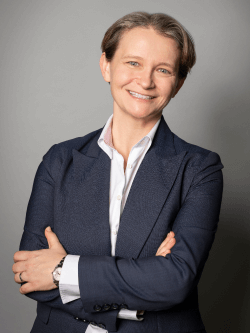The head of the agency charged with managing Sydney’s most iconic harbourside locations will talk about the audacious plan to turn a decomissioned power station into a world class contemporary arts venue at the Place Branding Australia conference, which runs from June 12-13.

Placemaking NSW CEO Anita Mitchell, who’s overseeing the renewal of the Bays West Precinct including Rozelle Bay, White Bay and Glebe Island, will discuss re-inventing infrastructure of a bygone era in a keynote address on Thursday.
Tickets are still available for the event here.
Work on the precinct includes remediation and conservation works at the historic White Bay Power Station, which opened to the public this year as a venue for the Biennale of Sydney.
The power station was built in 1912 to power Sydney’s tram system and rail network, and was decommissioned in 1984. It was heritage listed in 1999, with the state government beginning remediation in 2021.
Site activation and heritage works came with a $100 million price tag, with an additional $13 million for finishing works to transform the power station into what will be a permanent multifunction arts and culture venue – with a decidedly steampunk vibe.
Huge potential
As a local resident who drove or walked past the old power station on an almost daily basis, even before taking on her role with Placemaking NSW, Mitchell had always seen the potential in the site.
“I’ve always thought, ‘the government should do something with that’,” she told Government News.
“What I’m really passionate about is the White Bay Power station being used for a public purpose and being the cultural and civic heart of that new development.
“The beauty of Bays is we’ve got this wonderful asset that is so iconic and so large, you can almost do anything with it. And I think that’s been part of the problem – there’s almost nothing it can’t do within heritage constraints.”
Global examples like the Tate Modern in London, offered an example of what was possible at the site.
“So we earmarked it for future arts and culture, and then went about seeking funding for the original heritage works,” Mitchell says.
The original idea was to carry out heritage remediation and repair, and mothball the site until the government figured out what it wanted to do with it.
“But that just seemed like a crying shame, because, we really wanted to activate it, to get in there and just start trialing and testing the space.”
A home for the Biennale
Enter the Sydney Biennale, one of the nation’s biggest contemporary art events, which had found itself homeless with the Cutaway at Barangaroo out of action because of refitting, and Cockatoo Island no longer an option.
“Biennale effectively found themselves without a large space that they could activate, they were a bit homeless to be honest,” Mitchell says.
“So we said, we’re finishing White Bay Power Station around about January. You want it from March. It’d be a very tight timeframe, but we think we can make it work.”
The Biennale ‘bravely’ agreed to come on the journey.
‘Nail biting moments’
Mitchell admits it was a huge gamble for both the government and the Biennale Board.
“I’’m not going to sugarcoat it,” she says. “There were some nail biting moments, but we knew we would pull it off.”
Those moments included times when things went “minorly wrong” during installation, like when an overhelpful construction team repeatedly fixed up a damaged wall that was meant to be part of an art installation.
“Let’s just say it relied on a great relationship, because there were many points that either of us could have picked up the phone and said what the hell are you doing?”
But the exercise paid off, and Mitchell says the more than 100,000 visitors who came to the power station during Biennale were ‘absolutely gobsmacked’ by the venue.
Activation at any scale
Future plans for the site will see it host a series of music and arts events, including rave-era giant Ministry of Sound later this year, as well as conferences and corporate functions.
Mitchell says activations don’t have to be on the scale of the Bays project, and her address to the conference will highlight how the most modestly resourced local authority can find something in their own patch to activate, even if it’s a local park.
“I hope people draw a little bit of inspiration about how a government agency is reimagining place beyond, you know, just trying to draw a financial return out of commercial real estate,” she said.
“Hopefully some of the you smaller councils, the ones that don’t have access to the kind of resources that we have, can take home some insights from our experience.”
Tickets are still available for Place Branding Australia, which will be held at the Kimpton Margot Sydney over June 12-13.
Find more information and the full program here.





Leave a Reply